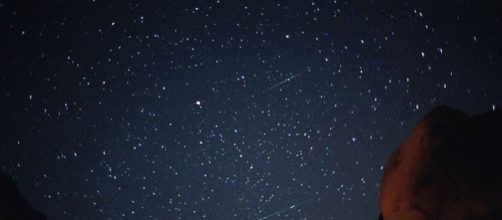For people who are especially fond of astronomical or celestial events, there is some good news. The Lyrid meteor shower is all set to take place and people in the United States will be able to view the magnificent occurrence. The meteor shower technically started from April 16; however, the phenomenon would have only been visible to people living in very dark and clear locations.
Shooting stars
The Lyrid meteor shower, named after the constellation Lyra, is an annual event and is visible for only one night. When the celestial event occurs, stargazers can see around 100 shooting stars every hour during its peak.
The meteor shower is caused due to a comet called Thatcher, which was last visible from Earth around two centuries ago. These Lyrid meteors are the result of the broken pieces of Thatcher’s tail, which were separated from the comet during its intergalactic journey.
The Lyrid meteor shower is not expected to be a big one this year. Thus, those who were expecting to witness a rapid fire of meteors this season will be highly disappointed. One can expect to witness around 20 meteors every hour between April 21 and April 22, especially in areas with clear skies and less pollution.
Best place for witnessing the Lyrid meteor shower
One of the best places for witnessing the shooting stars is the countryside or the National Parks.
However, those who intend to enjoy the spectacle during its peak can witness it on April 22 after 10.00 P.M. One of the best times to witness the meteor shower is after midnight, as, during this time, the point of origination of the meteors starts climbing high in the sky.
However, onlookers need not stare or gaze at one particular point to witness the much-awaited shower.
The meteors, despite originating from a single point, will be visible all over the sky. Spectators will only have to wait for the shower to start, and keep their eyes peeled toward the open sky to witness the event.
Those staying in the western part of United States and the Great Lakes will get the best possible view on Friday, April 21.
The clear skies will offer great visibility and onlookers will be able to enjoy the celestial event. The greater part of the East Coast and the Rocky Mountains, as well as Central Plain, are likely to experience heavy clouds, which will lead to poor viewing conditions for those in the region. Several showers are expected from April to October, but most of the peaks will fall around the full moon. That said, the light from the moon makes the spotting of weaker shooting stars a bit easier as well.

